Some indoor plants that are safe for cats to live inside are spider plants and Boston ferns. These choices will give your cats a safe and healthy place to live.
If you share your home with cats, it’s important to think about their safety when picking house plants. Many popular houseplants are dangerous for cats to eat and can hurt them if they do. By choosing non-toxic items, you can make the area green and inviting without putting your pet in danger.
This guide will show you a number of houseplants that cats can safely live with. This will help you make an indoor garden that is both lush and safe for your cat. There are many types of plants that can look nice in your home and keep your cat safe. Some are easy to take care of, while others are bright and colorful. Now let’s look into the best plants for cats that you can put in your home.
Indoor Plants, African Violet (saintpaulia)
Cats can safely live with the African Violet (Saintpaulia), which is a beautiful houseplant known for its bright flowers and easy care. Perfect for pet-friendly homes, this easy-to-care-for plant does best in dim light. With its beautiful colors and safe nature, it’s a great addition to any cat-loving home.
Africa’s violet, which is also called Saintpaulia, is a popular houseplant loved for its bright flowers and ease of care. Let’s talk about this lovely addition to your indoor green area.
Attributes Of African Violet:
- Delicate, velvety leaves in shades of green and silver: African Violets are known for their beautiful leaves that make any room look more elegant.
- Petite, colorful blossoms in hues of purple, blue, pink, and white: They bloom in groups of these pretty flowers, adding a splash of color to your room.
- Compact size: African Violets grow small and tight, so they can be put on tables, shelves, or window sills. This makes them perfect for homes with limited room.
Care Tips For African Violet:
- Provide indirect sunlight: To get the best growth and blooming, put the plant somewhere that gets bright, indirect light.
- Maintain consistent moisture: When the top inch of earth feels dry, water the African Violet. Be careful not to get water on the leaves, though, so they don’t get hurt.
- Use well-draining soil: Plant African Violets in peat-based potting mix that drains well to keep the right amount of wetness and keep the plants from getting too wet.
- Avoid cold drafts and temperature extremes: Protect the plant from cold air and changes in temperature to keep it healthy and avoid stress.
Common Issues With African Violet:
- Leaf spotting: Fungal diseases and leaf spot can happen to African Violets. To avoid these problems, make sure there is good air flow and don’t water from above.
- Overwatering and underwatering: For African Violets to stay healthy, it’s important to find the right mix of watering. If you water too much, the leaves will turn yellow, and if you water too little, the tips of the leaves will get dry and brown.
The African Violet is a beautiful houseplant that is safe for cats. It will add color and charm to your home without putting your cat in danger.
Indoor Plants, Baby’s Tears (soleirolia Soleirolii)
Baby’s Tears, which is also known as Soleirolia soleirolii, is a favorite houseplant that cats can live with. It has soft, lush leaves. This easy-care plant does best in damp places and is safe for your cats. It’s great for adding a touch of green to your home.
Baby’s Tears, which is sometimes called Angel’s Tears, is a lovely houseplant that can make your rooms look more elegant. This plant grows slowly and creeps along the ground. Its tiny, round leaves make it look lush and delicate.
A lot of people choose Baby’s Tears for terrariums and hanging baskets because it trails and does well in wet conditions.
- Light: Baby’s Tears like bright, indirect light, but they can also survive in low light. Keep the leaves out of direct sunlight because it can burn them.
- Watering: Make sure the dirt is always damp, but not soaked. Baby’s Tears do best in damp places and do better when they are misted often.
- Soil: Use a peat-based potting mix that drains well to keep the plant’s wetness level steady and keep it from getting too wet.
- Temperature: Keep the temperature fixed between 65°F and 75°F (18°C and 24°C) for the best growth.
- Propagation: It’s easy to share and grow your home garden with Baby’s Tears because you can easily grow new plants from stem cuttings.
- Maintenance: Regularly prune the plant to keep it looking small and trailing and to keep it from getting too crowded.
The lovely scent of Baby’s Tears will make your home feel clean and exciting. This houseplant is great for both experienced and new gardeners because it can be used in many ways and looks nice.
Indoor Plants, Chinese Money Plant (pilea Peperomioides)
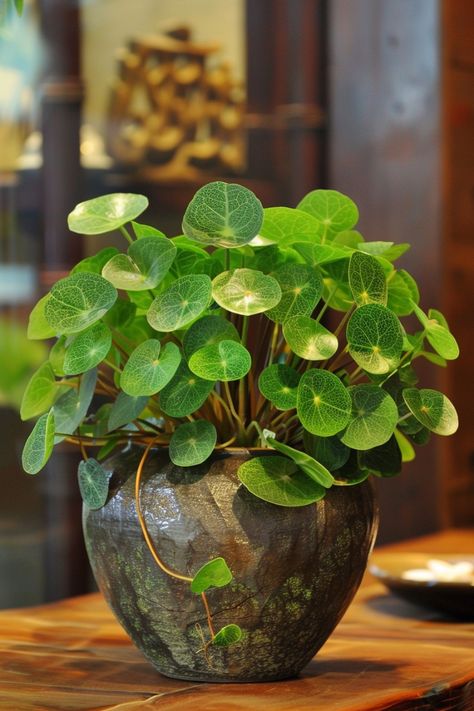
The Chinese Money Plant, which is also called Pilea peperomioides, is a safe houseplant that can be kept with pets. This one-of-a-kind plant life adds a touch of green to your home without hurting your pets. Its round, shiny leaves make it a popular choice for cat owners who want to keep plants inside that are safe for their cats.
People who like plants often choose Pilea peperomioides, which is also known as the Chinese Money Plant, because it has unique, round leaves and is easy to take care of. This is all the information you need to know about this lovely houseplant.
Characteristics:
- It has round, coin-shaped leaves that make it stand out and look good in any room.
- It’s small, so it’s great for small areas or as a plant on your desk.
- Nature that grows quickly, so you can enjoy its lush leaves right away.
Care Tips:
- Keep it in bright, indirect light to keep its bright green color.
- To keep root rot from happening, water plants in small amounts and let the dirt dry out a bit between waterings.
- Make sure the plant grows evenly on all sides by turning it often.
Propagation:
- Chinese Money Plants are easy to grow more of by dividing them or cutting off the branches that grow from the main plant.
- Carefully cut off the offsets and plant them in a pot with dirt that drains well to help the roots grow.
Health Benefits:
- It gives off oxygen and makes the air inside better.
- It makes you feel calm and peaceful, which is good for the health of everyone in the house.
The Chinese Money Plant is not only nice to look at, but it is also easy to take care of and good for your home. No matter how much you know about taking care of plants, this one is sure to bring joy and a touch of nature into your home.
Indoor Plants, Banana Tree (musa Spp)
A cat can live with the Musa spp. plant, which is also known as the Banana Tree. In addition to adding some color to the room, this tropical plant makes it safe for cats. The plant’s broad leaves make the room feel lush, and it’s great for cat owners who want cat-friendly plants.
The thick leaves and tropical feel of the Banana Tree make it a great addition to any cat-friendly home. Here is all the information you need to make sure that both your cat and this beautiful plant are safe and have fun.
- Non-Toxicity: The Banana Tree is safe for cats to chew on, so pet owners who are worried about their furry friends damaging flowers can choose this one.
- Care: For this plant to do well, it needs a lot of sunlight, regular watering, and dirt that doesn’t stay soggy. Its big leaves might need to be dusted every once in a while to stay clean and healthy.
- Space: Make sure you have enough room in your home for the Banana Tree’s size because it can grow very big.
- Potential Hazards: Even though they are not poisonous, the Banana Tree’s big leaves could still be dangerous for cats if they accidentally knock it over or break a leaf. Always think about where you put it in your home.
Because of these facts, the Banana Tree is a great choice for cat owners who want to add a pet-safe, aesthetically pleasing houseplant to their area.
Indoor Plants, Echeveria (echeveria Spp.)
Cat owners can keep their cats inside with the beautiful echeveria plant, which has thick leaves that are shaped like rosettes. Echeveria brings a bit of nature into your home and keeps your pets safe from harmful chemicals because it doesn’t need much care.
People who like houseplants often choose echeveria plants because they have beautiful rosette-shaped leaves and don’t need much care. Here is what you need to know about Echeveria to keep your pets safe and make your home look better with these pretty succulents:
- The echeveria plant is in the Crassulaceae family, and its leaves are loved for their bright colors, which range from pale blue to deep purple and green.
- Cats can’t get sick from these plants, so pet owners who want to add some greenery to their homes without putting their pets at risk should choose them.
- Because they do best in bright sunlight and dirt that doesn’t stay soggy, echeveria plants do well on sunny windowsills or in rooms with lots of light.
- These plants don’t need to be watered very often and can survive dry spells, so they’re a hassle-free addition to any indoor yard that cats can enjoy.
Remember that even though Echeveria is safe for cats, you should still be careful with other plants that weren’t talked about in this post to make sure that your home stays a safe and fun place for both your cats and your plants.
Indoor Plants, Gloxinia (sinningia Speciosa)
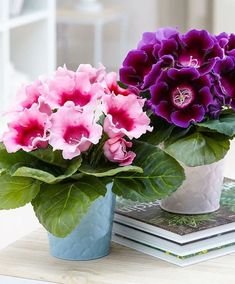
If you have a cat, you can keep Gloxinia, which is also known as Sinningia speciosa, as a houseplant. It has beautiful silky trumpet-shaped flowers that are bright pink, purple, and red. This easy-care plant brings color into your home and is safe for cats, so it’s a great choice for indoor gardening with cats in mind.
Gloxinia, which is also called Sinningia speciosa, is a beautiful houseplant with bright, bell-shaped flowers and lush leaves. A touch of elegance can be added to any room with this famous plant. This is what you need to know to take care of Gloxinia:
- Light Requirements:
- Light that comes from the side is best for gloxinia. Put it near a window that faces north or east to get the best conditions for good growth and lots of blooms.
- Watering:
- Make sure the dirt is always damp, but not soaked. If you want to keep the plant from getting root rot, only water it when the top inch of dirt feels dry to the touch.
- Temperature:
- Keep the temperature steady between 65°F and 75°F (18°C and 24°C) for the best blooming and growth. Gloxinia should not be exposed to drafts or big changes in temperature.
- Humidity:
- Gloxinia likes it when there is more wetness. If you want to keep the air wet, you can mist the plant often or put a tray of water and pebbles nearby.
- Fertilization:
- Every two to four weeks during the busy growing season, give Gloxinia a balanced liquid fertilizer to keep the leaves healthy and the flowers plentiful.
- Potting Mix:
- Use potting mix that is porous, drains well, and is high in organic matter. The best place for Gloxinia to grow is in a mix of peat moss, perlite, and vermiculite.
Gloxinia is a beautiful plant that will brighten up any room with its bright colors and lush leaves. If you give this beautiful houseplant the care it needs, it will thank you with lots of beautiful flowers that will make your home look better.
Indoor Plants, Spider Plant (chlorophytum),
It is safe for cats to live with Spider Plant, which is also called Chlorophytum. This plant is great for cat-friendly homes because it is easy to take care of and has long, curving leaves. It also makes baby spider plants. It should be in a hanging pot so your cat can’t get to it.
To the scientific community, the Spider Plant (Chlorophytum) is a great addition to your home because it cleans the air and is safe for cats. It has long, curving leaves that make it a nice-looking and pet-friendly choice for decorating inside.
- Thrives in Various Conditions:
- The Spider Plant is hardy and can grow in a range of light conditions, so it can be used in many places in your home. It can grow in places with bright, indirect light or shade, and it doesn’t need much care.
- Easy to Care for:
- The Spider Plant is a great choice for pet owners who want an easy-care plant because it doesn’t need much care. You only have to water it once in a while, so you can enjoy its beauty without much work.
- Pet-Friendly and Safe:
- As a non-toxic plant, it won’t hurt your cats if they eat it, giving pet owners peace of mind. It’s a popular choice for homes with cats that are interested and like to play because it’s safe.
As an added bonus, the Spider Plant is great for cat-friendly homes because it adds a touch of greenery and keeps your pets safe and healthy.
Indoor Plants, Venus Fly Trap (dionaea Muscipula)
The Venus Fly Trap (Dionaea muscipula) is a beautiful plant that eats dead animals and can be kept in homes with cats without any problems. This plant is known for the strange way it eats. It adds a bit of mystery to any cat-friendly home without hurting pets.
If you want to get rid of pests in your home naturally and in an interesting way, Venus Fly Traps are the perfect plant for you. You might want to add a Venus Fly Trap to your home garden because:
- Carnivorous Nature: Venus Fly Traps are plants that eat animals and are known for being able to catch and eat bugs. Because they naturally get rid of pests, they are a great thing to have around the house.
- Low Maintenance: The only things these plants need are distilled water, a humid climate, and a lot of sunlight. They also do well in dirt that is acidic.
- Interactive Plant: Venus fly traps are plants that react to being touched. Because they close with traps, they are both interesting and educational to have as house plants.
- Pest Control: As good bug catchers, Venus Fly Traps help get rid of pests like gnats and fruit flies, making the inside of your home healthier.
- Visual Appeal: These plants look beautiful and scary at the same time, making them a unique and interesting addition to any room.
You might want to add a Venus Fly Trap to your home plant collection if you want to get rid of pests naturally and find it interesting that some plants eat other plants.
Areca Palm (dypsis Lutescens)
If you want to keep your cat inside, the Areca Palm, which is also called Dypsis lutescens, is a popular pick. The plant has beautiful, arching leaves and is safe for cats, so it is a great addition to any pet-friendly house. It doesn’t need much care and cleans the air, so it’s a great choice for house plants.
The Areca Palm, which is also called Dypsis lutescens, is a favorite houseplant because it looks nice and cleans the air. When adding the Areca Palm to a cat-friendly home, here are some important things to keep in mind:
- Non-toxic: Pet cats can safely live with the Areca Palm. It adds a bit of tropical style to your home without hurting your cats.
- Pet-friendly: This plant is safe for pets, so you can let your furry friends walk around without worrying about them getting sick.
- Moderate care: The Areca Palm doesn’t need much care, but it does need regular feeding and indirect sunlight to do well indoors.
Indoor Plants, Boston Fern (nephrolepis)
Some plants are dangerous for cats, but the Boston Fern, which is also called Nephrolepis, is a great choice. Its lush, falling fronds add a bit of greenery and are safe for cats to touch. This easy-care plant does best in dim light, which makes it a great addition to any home with cats.
The Boston Fern, which is also called Nephrolepis exaltata, is a favorite indoor plant because of its small, arching leaves that clean the air. This fern does best in damp, shady places, which makes it a great addition to any cat-friendly house.
Plant Description:
- Graceful Appearance: Small, lacy leaves of the Boston Fern fall gracefully from its center, adding a touch of natural beauty to any room.
- Air-Purifying Abilities: This plant is very good at getting rid of air pollutants, which makes your home healthy for you and your cats.
Care And Maintenance:
- Light Requirements: Put the Boston Fern somewhere with indirect light so that its delicate leaves don’t get burned.
- Humidity Needs: Make sure the fern is always in a humid place to make it feel like it is in its natural surroundings. Regularly mist the plant or put a tray with rocks and water under it to keep the humidity at the right level.
- Watering Schedule: Keep the soil fairly wet, but not so wet that it can’t breathe. Every so often, check the dirt and water it when the top inch feels dry.
- Temperature Sensitivity: This fern does best in temperatures between 60°F and 75°F (15°C and 24°C), and it should be kept away from drafts and quick changes in temperature.
Known Pet-friendly Attributes:
- Non-Toxic: Boston Ferns are safe for cats and can be a lovely addition to a home with pets.
- Pet Attraction: The Boston Fern’s lush, feathery leaves may also make a nice, interesting place for your cats to rest and explore.
When you bring Boston Ferns into your home, they can add a nice touch of greenery and make your living places look better while keeping your pets safe.
Indoor Plants, Calathea (calathea Spp.)
Calathea plants, which are also called “prayer plants,” look beautiful in any home and are safe for cats. Because of their bright, patterned leaves, they are often chosen as cat-friendly pets. They will add style and safety to your home.
If you have a cat, you can keep the beautiful Calathea plant, which is also called the prayer plant. People with pets who want to add some greenery to their homes without thinking about their furry friends love this plant because of its pretty, patterned leaves.
Characteristics Of Calathea
- Unique Patterns: The leaves of calathea plants have beautiful patterns that make any place more interesting to look at.
- Pet-friendly: Because it is safe for cats and won’t hurt them, Calathea is a great choice for plant lovers.
Caring For Calathea
- Light: Calathea likes bright, indirect light, so it does best in well-lit rooms that don’t get full sunlight.
- Watering: Make sure the dirt is always damp, but not soaked. Since calathea does best in damp places, misting the leaves can help.
- Soil and Fertilizer: Calathea does best in peat-based soil that drains well. The plant needs to be fed a balanced liquid fertilizer every two weeks while it is growing.
Calathea’s Unique Behavior
- Movement: One of the most interesting things about Calathea is that its leaves can move throughout the day, opening and closing as the light changes.
- Air Purification: In addition to looking nice, Calathea can help clean the air inside your home, making it a useful and attractive choice for any room.
Calathea Varieties For Your Home
- Calathea orbifolia: This type is known for having beautiful round leaves with silver-green stripes that make any room look more elegant.
- Calathea medallion: This type stands out in any room thanks to its shiny, broad leaves with designs of light and dark green.
Bringing Calathea Home
Bringing a Calathea into your home with your beloved cat can add a bit of natural beauty and make sure your pet is safe because it is non-toxic.
Wrapping Up
Calathea is a non-toxic plant with beautiful leaves that cat owners can use to add houseplants to their homes without worrying about their cats getting sick. You can choose from different kinds and enjoy their unique behaviors. Adding a Calathea to your collection can be a safe and attractive choice for you and your cat.
Indoor Plants, Haworthia (haworthia Spp.)
The Haworthia is a small, easy-to-care-for plant that is safe for cats and looks great in any pet-friendly home. The rosette of thick, pointy leaves on Haworthia is both beautiful to look at and safe for your cats. It adds a stylish and safe touch of greenery to your home.
Cat owners like Haworthia plants because they are safe for cats to be around. With these plants, you can add some green to any room without much work.
Discover what you need to know about Haworthia plants and how to keep them healthy in a place where cats are welcome.
- Low Maintenance: Haworthia plants are known for not needing much care, which makes them a great choice for cat owners who are always on the go. They do best in bright, indirect light and don’t need much water.
- Succulent Characteristics: Because these plants are succulents, their leaves store water. Because of this trait, they can survive dry times, which makes them strong and flexible in a variety of indoor settings.
- Compact Size: Because haworthia plants are usually small and tight, they are great for adding greenery to small areas. They are also the right size to fit on desks, shelves, or window sills without taking up too much space.
- Variety of Shapes and Colors: Haworthia plants come in many different kinds, and each one has its own shape and color. These plants are visually interesting in many ways, from their classic rosette form to their spiky leaves.
- Propagating Potential: One nice thing about Haworthia plants is that they are easy to grow more of. This means that you can grow new plants from stems or leaves, so you can add to your collection or give them to family and friends.
Haworthia plants look nice and are safe for cats, so they’re a good way to add some green to your home. The small size, low care needs, and wide range of shapes and colors of these plants make them a great addition to any cat-friendly home.
Indoor Plants, Polka Dot Plant (hypoestes Phyllostachya)
The Polka Dot Plant, which is also called Hypoestes phyllostachya, is a beautiful houseplant that cats can handle. Its unique spotted leaves add a splash of color to any room inside, which is why cat owners like to bring it into their homes as a pet-friendly plant.
This is a bright and beautiful houseplant that makes any room look better. People love this plant because its leaves are unique because they have pink, white, or red spots on them.
It looks nice and is safe for your cats. Find out more about this pretty plant and how to take care of it.
Plant Description
- With its oval-shaped leaves covered in bright spots, the Polka Dot Plant makes a beautiful show of leaves.
- When it grows, it usually stays small, so it can be used indoors on shelves, desks, or tabletops.
- This plant comes in different types with different color combinations, such as green leaves with pink, red, and white spots.
Pet-friendly Attributes
- Non-toxic to cats: People who have pets can feel safe knowing that the Polka Dot Plant is safe for their furry friends.
- Visual appeal: Its pretty leaves make it a cute addition to any pet-friendly home, and cats can live with it without any problems.
Care Tips
- Light: It does best in bright, indirect light, which makes it a great choice for indoor settings.
- Water: Always keep the earth moist, but don’t water it too much, because that can cause root rot.
- Humidity: Likes higher humidity, so you might want to mist the plant or put it near a fan.
- Pruning: Pinch back the stems often to keep them looking neat and encourage bushier growth.
Final Thoughts
Not only does the Polka Dot Plant look nice, but it is also safe for cats and can be used by cat owners who want to add more plants to their homes. If you give this cute plant the care it needs, it will grow well and bring happiness to both you and your cat.
Indoor Plants, Air Plant (tillandsia Stricta)
Tillandsia stricta, or “Air Plant,” is a houseplant that cats can live with and is liked for its unique look and low care needs. You can grow this tough plant without dirt, and it’s safe for homes with cats. It’s a great addition to any pet-friendly home garden because it doesn’t need much care and looks exotic.
Air plants, whose formal name is Tillandsia stricta, are often chosen as cat-safe houseplants because of the way they grow and how little care they need. These interesting plants don’t need soil to grow, which makes them a great addition to any indoor yard that cats can enjoy.
- Minimal Care: Air plants are easy to take care of; they only need to be misted or soaked every once in a while. Their leaves soak up water, which makes them easy to take care of, even for pet owners who are always on the go. But for them to do well, they still need good air flow and bright, indirect light.
- Non-Toxic: The good news is that air plants are safe for cats, so pet owners can choose them. You can show off these beautiful plants in hanging terrariums or on stands for decoration without worrying about your cats getting into anything dangerous.
- Aesthetic Appeal: Air plants come in many shapes and sizes and can live in any room. They add a creative and modern touch. Their unique shapes make them a visually appealing choice for cat-safe houseplants that will add to the greenery in your home without hurting your pets.
Because of these unique traits, air plants are a great choice for pet owners who want to add safe and beautiful plants to their homes.
Remember that even though air plants are safe for cats, you should still watch how your pets interact with them to make sure they stay safe and healthy.
Indoor Plants, Prayer Plant (maranta Leuconeura)
If you have cats, the Prayer Plant (Maranta leuconeura) is a safe and pretty houseplant for them. Its colorful, patterned leaves and ease of care make it a great plant for cat-friendly houses. This plant won’t hurt your cats, so you can bring a little nature inside without worrying about them.
The Prayer Plant, whose chemical name is Maranta leuconeura, is a popular choice for pet-friendly homes because it is safe for them. The leaves of this beautiful plant have unique patterns and fold together at night to look like prayer hands. Here are some facts about the Prayer Plant and how to take care of it:
- Low Light Requirement: The Prayer Plant does best in low to middling indirect light, so it can be kept inside where it won’t get much sun. It will do best if you put it near a window that faces east or somewhere shady.
- Humidity: Because this plant likes places with a lot of humidity, it’s a great choice for bathrooms or kitchens that naturally have a lot of wetness. You can also make sure the plant’s needs are met by misting it often.
- Moisture: It is very important for the Prayer Plant’s health that the dirt stay moist without getting too wet. It is very important to water it with room-temperature water and make sure it can drain well.
- Temperature: Keeping the temperature warm and steady, ideally between 65°F and 75°F, is very important for the Prayer Plant’s health.
- Pet-Friendly: Many cat owners feel better knowing that their cats and this beautiful plant can live together without any problems because the Prayer Plant is safe for cats.
The Prayer Plant is a great addition to any cat-friendly home because of its unique designs and easy care needs.
Indoor Plants, Friendship Plant (pilea Involucrata)
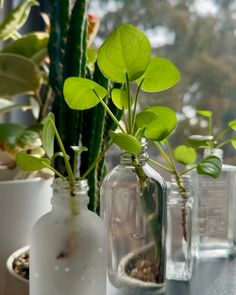
The Pilea involucrata, or Friendship Plant, is a beautiful house plant that cats can live with. It adds color to any room. With its beautiful, one-of-a-kind leaves, this plant is safe for cats and makes your home look more natural.
The Pilea involucrata, or Friendship Plant, is a lovely plant to have in a cat-friendly home. It’s a popular choice for both experienced and new plant owners because of its unique leaves and low care needs.
- Vibrant Foliage: The dark green, rough leaves of the Friendship Plant are eye-catching and have golden spots on them, making any room look more elegant.
- Pet-Friendly: Because it is not known to be poisonous to cats, this plant is a safe place for your pets to play.
As well as looking nice, the Friendship Plant makes pet owners feel safe, which makes it a great choice for cat owners who want to find a balance between nature and their cats.
Indoor Plants, Peperomia (peperomia Spp.)
The leaves of the peperomia plant look nice, and cats can safely live with it. This easy-to-care-for plant will add some green to your home and is safe for your cats. Because it is non-toxic, Peperomia can grow well in a variety of home settings, making it a good choice for pet owners.
People who own cats often choose Peperomia, which is also known as the heater plant, because it is safe for cats.
- Variety of Species: There are different kinds of peperomia plants, like the baby rubber plant, the watermelon peperomia, and the ripple peperomia.
- Attractive Foliage: People love this plant for its pretty and varied leaves, which can be solid, multicolored, or waxy.
- Low Maintenance: Peperomia plants don’t need much care, which makes them a great choice for people who are just starting to grow plants.
- Pet-Friendly: Peperomia plants are safe for your pets because cats and dogs can’t get sick from them. Cats and dogs can’t get sick from peperomia plants, so they are safe for them.
- Suitable Growing Conditions: They do best in bright, indirect light and dirt that drains well to keep the roots from rotting.
Indoor Plants, Orchid (orchidaceae)
Orchids are great for cat-friendly homes because they are safe for cats and make any room look more elegant. Their beautiful blooms and range of colors make them a popular choice for houseplants. They can add style and beauty to any room without hurting your cats.
Orchids, which are in the family Orchidaceae, are loved for their beautiful and unusual flowers, and they are also safe for cats. To add these beautiful flowers to your space while keeping your cat safe, follow these steps:
- Non-Toxic: Cats can’t get sick from orchids, so pet owners who are worried about their cats’ health can feel safe using them.
- Low Maintenance: Although they do need some care and attention to grow, these houseplants are very low upkeep, which makes them perfect for cat-friendly spaces.
- Varied Colors and Shapes: Because they come in many colors and sizes, orchids add variety and beauty to your home, making it look better.
- Air Purification: Orchids can help clean the air inside your home, making it a healthier place for your cat and your family.
- Suitable for Various Environments: To add a bit of elegance and charm to any room inside, orchids can be put in a hanging basket, on a windowsill, or as part of a flower arrangement.
With their beautiful looks and non-toxic nature, orchids are the perfect combination of beauty and safety, making a safe space for both cats and their owners.
Mosaic Plant (fittonia Albivenis)
The Fittonia albivenis Mosaic Plant is a famous houseplant that cats can live with because its leaves are bright and have lots of different shapes and sizes. It does best in low to medium light, which makes it a great plant for pet-friendly homes. The unique way it looks and how easy it is to take care of make it a great choice for plant lovers who want to add some green to their homes.
Mosaic Plant, which is also called Fittonia albivenis, is a beautiful choice for people who like to keep plants inside, especially those who have cats. This tough and beautiful plant will add a splash of color and personality to any room and is safe for your cats.
- Vibrant Foliage: People love the Mosaic Plant’s beautiful, mosaic-like leaves that have intricate designs of white and green, pink, or red veins.
- Low Maintenance: Because it does best in high humidity and moderate to low light, this houseplant is perfect for places inside. It also doesn’t need much care, which makes it great for people who are always on the go.
- Non-Toxic: Fittonia albivenis is safe for cats and won’t hurt them, so pet owners can rest easy. Because it is safe, you can put it in different places in your home without worrying about your cat’s health.
- Easy Propagation: It’s pretty easy to spread the Mosaic Plant. You can easily add more of these lovely plants to your collection by taking stem cuttings or dividing them.
The Mosaic Plant is a great addition to any cat-friendly home because it has bright leaves, doesn’t need much care, and is safe for cats.
Bromeliad (bromeliaceae)
The Bromeliad is a famous houseplant that is safe for cats and is known for its bright colors and unique leaves. It is in the Bromeliaceae family. It is very low upkeep and cleans the air, which makes it a great choice for cat-friendly homes that want to add some greenery.
Not only are bromeliads pretty, they are also safe for your cats. The Bromeliaceae family includes these beautiful plants, which are known for their bright flowers that last a long time and their unique leaves.
- Bromeliads are safe for cats to touch, so they are a great plant to have in your home.
- Their bright flowers and interesting leaf patterns can make any place feel better.
- These plants are easy to take care of because they don’t need much watering and do best in dim light, which is great for pet owners who are always on the go.
In conclusion, adding a bromeliad to your home can make it safer and more attractive for both you and your pet friend.
Ponytail Palm (beaucarnea Recurvata)
The Ponytail Palm (Beaucarnea recurvata) is an easy-to-care-for houseplant that adds a touch of the tropics to any room. Its unique bulbous base and long, cascading leaves make it a great choice for pet-friendly homes that want a pretty and easy-to-take-care-for green friend.
The Ponytail Palm: A Stunning Addition To Your Cat-safe Indoor Garden
The Ponytail Palm, also called Beaucarnea recurvata, is a beautiful plant that is safe for cats and would make a great addition to any home garden. This plant not only adds a foreign touch to your home, but it also doesn’t need much care, which makes it a great choice for pet owners who are always on the go.
Read on to learn about the many benefits of having a Ponytail Palm in your home and how to take care of it.
Characteristics Of The Ponytail Palm:
- Distinctive Appearance: The Ponytail Palm has a dramatic, swollen base with long, thin leaves that fall from the middle and look like a beautiful ponytail.
- Pet-Friendly Attributes: This plant is safe for cats, so pet owners don’t have to worry.
- Low-Maintenance: The Ponytail Palm is known for being hardy and does well in a wide range of indoor situations. It also doesn’t need much watering, which makes it a great choice for busy households.
Care Tips For The Ponytail Palm:
- Ideal Lighting: To make sure it grows well, put the Ponytail Palm somewhere with bright, indirect sunlight.
- Watering Requirements: To avoid root rot, let the earth dry out completely between watering.
- Optimal Potting Medium: To keep the plant’s roots at the right level of moisture, use potting mix that drains well.
- Temperature Considerations: The Ponytail Palm should be kept in a warm place, away from cold air and extreme temperatures.
In Summary
The Ponytail Palm is a beautiful houseplant that is safe for cats. It’s great for people who want an easy-to-care-for plant friend. This plant is a beautiful addition to any indoor garden because it looks foreign and doesn’t need much care. It will also keep your cats safe.
Purple Waffle Plant (hemigraphis Alternata)
The Purple Waffle Plant (Hemigraphis alternata) is pet-safe, bright, and easy to take care of. This houseplant’s unique purple leaves make any room look nicer and keep your cats safe.
Introduction
There are many cat-friendly houseplants, but the Purple Waffle Plant, whose formal name is Hemigraphis alternata, stands out because it adds bright color and texture to any room. This plant is great for cat owners who want to add a touch of nature to their home while keeping their cats safe. It has beautiful leaves that are easy to take care of.
Characteristics Of The Purple Waffle Plant
- Striking Appearance: The Purple Waffle Plant has beautiful yellow-tinged purple leaves with a unique wavy texture that make it look good in any indoor setting. The bright color and design of the leaves make this plant a nice-looking and interesting choice for cat-friendly home decor.
- Compact Growth: This plant doesn’t get very tall, so it can be kept on shelves, tables, or countertops that aren’t too big. Cat owners can fit it into their living areas without giving up valuable floor space because it’s small.
- Low Maintenance: Hemigraphis alternata doesn’t need much care; it does best in moderate indoor lighting and soil that stays wet all the time. Its hardiness and flexibility make it an easy plant to add to your collection. Busy cat owners looking for low-maintenance plants will love it.
Caring For The Purple Waffle Plant
- Light Requirements: Put the Purple Waffle Plant somewhere that gets indirect sunlight. Too much straight sunlight can hurt its delicate leaves. For healthy growth and bright leaves, bright light that has been filtered or artificial indoor lighting is best.
- Watering Routine: Keep the earth moist, but don’t water it too much, because that can cause root rot. Check the soil’s level of wetness often and change how often you water to keep the roots healthy and hydrated.
- Humidity and Temperature: This plant does best in rooms that are about normal temperature and have a lot of humidity. You might want to mist its leaves to keep the right conditions, especially if you’re inside where it’s dry.
The Purple Waffle Plant And Your Feline Companions
- Pet-Safe Characteristics: Feel safe letting the Purple Waffle Plant into your home if you have cats because it doesn’t hurt them. This makes it a great choice for families who want to grow an indoor garden that cats can enjoy while also putting their dogs’ health first.
- Preventive Measures: Even though the Purple Waffle Plant is not poisonous, you should still watch how your cats associate with houseplants. Even so, some cats may still be interested in the leaves, and it’s best to take steps to keep them from nibbling on them.
Explore the world of houseplants that are safe for cats, and the Purple Waffle Plant’s beautiful colors and textures will make your home look better. A fulfilling way to improve your living area is to enjoy its unique beauty while putting the safety and well-being of your beloved cats first.
Purple Passion Vine (gynura Aurantiaca)
The Gynura aurantiaca, or Purple Passion Vine, is a beautiful houseplant that cats can live with. Its thick purple leaves add a splash of color to any room inside, and pet owners can rest easy knowing that it is safe for their pets.
Gynura aurantiaca, which is also known as Purple Passion Vine, is a beautiful houseplant that can make any room look more lively. This plant is both pretty and safe for cats, which makes it a great choice for home gardening with cats in mind.
We’ll talk about this beautiful plant’s main traits and how to take care of it below.
Key Characteristics:
- Deep purple foliage with velvety texture: The Purple Passion Vine has leaves that are a deep, rich purple color and feel soft and velvety. They make a beautiful show.
- Fast-growing nature: People know this plant for how quickly and thickly its leaves cover any empty space it has.
- Pet-friendly: Cats can enjoy the beauty of the Purple Passion Vine without worrying about their pets.
Care Tips:
- Indirect sunlight: To help it grow well, put the Purple Passion Vine somewhere that gets bright, indirect sunlight.
- Well-draining soil: Soil that drains well will keep the plant from getting too wet, since it likes soil that is slightly damp but not wet.
- Regular watering: Make sure the plant gets enough water without giving it too much by watering it when the top layer of soil feels dry to the touch.
When you bring the Purple Passion Vine (Gynura aurantiaca) inside, it makes the room look beautiful with its color and structure. It’s a great addition to any cat-friendly home because it’s safe for pets and looks great.
Frequently Asked Questions On Cat Safe House Plants
What Are Some Cat Safe House Plants?
Spider plants, Boston ferns, and African violets are all safe for cats to live inside.
How Can I Determine If A Plant Is Safe For My Cat?
For cat-safe options, visit the ASPCA website or ask at your local garden shop.
Why Are Some House Plants Toxic To Cats?
Some plants have chemicals in them that are bad for cats if they eat them.
What Steps Can I Take To Keep My Cat Safe Around House Plants?
Keep plants out of reach, use smells that scare cats away, and watch how they act.
What Are The Signs Of Plant Poisoning In Cats?
Cats that eat plants can get sick and show signs like sickness, diarrhea, and being tired. If you think your pet has been poisoned, call your vet right away.
Conclusion
By adding cat-safe house plants to your home, you can add a bit of natural beauty and make sure that your cats are safe. According to the instructions given, you can make a healthy and peaceful space for both your plants and your pets.
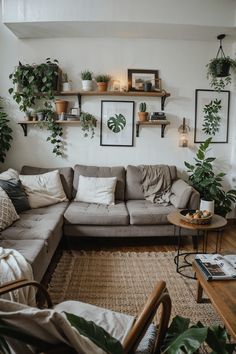
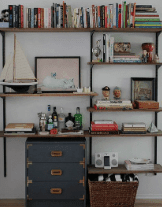
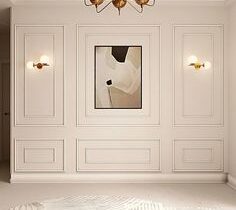
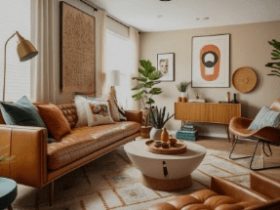
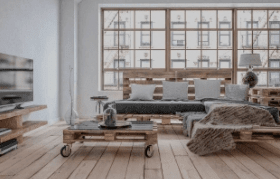





Leave a Review